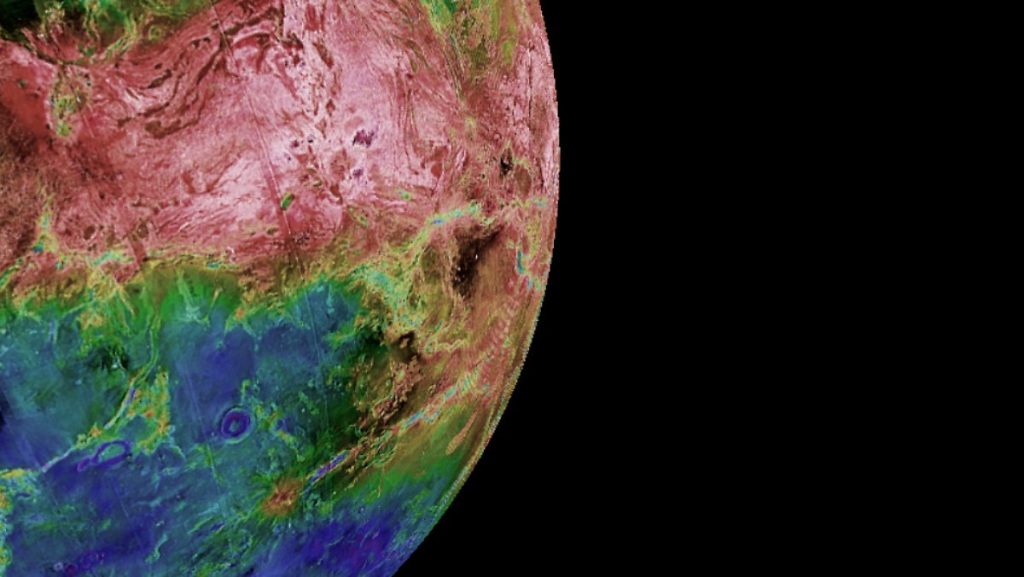earth twin
New NASA photos of the planet Venus
2/15/2022 4:04 PM
So far, the images have shown Venus as a white disk, because the atmosphere does not allow for a deeper look. But now images of the planet’s surface are working. They surprise because the planet on it is very similar to the Earth.
Venus is known as the morning or evening star on Earth, depending on the season. But to take a closer look at the planet is not easy, because the surface of Venus is usually surrounded by thick clouds. Images of the planet so far have shown a featureless white disk. This is the result of sunlight scattered from the impenetrable atmosphere. However, the US space agency NASA has published images that show the surface of the planet.
The images are from the Parker Solar Probe, on its way to exploring the sun. It was created during two flybys in July 2020 and February 2021. Using the Parker Solar Probe Telescope’s Wide Field Imager (WISPR), the probe was able to image the entire night side of Venus at wavelengths ranging from the visible to the infrared spectrum. According to NASA, photos and videos show a “faint glow” from the surface. The glow can be compared to the glow of the northern lights on Earth. However, characteristic features such as continental areas, plains and plateaus can also be seen on the surface of the planet. Such features have not previously been depicted in the visible spectrum of light.
“Until recently we didn’t have much information about what the surface looked like because our view of it is obscured by the dense atmosphere,” says Brian Wood, lead author of the new study and a physicist at the Naval Research Laboratory in Washington, DC. In the scientific publishing of pictures In geophysical research letters. “Now we are finally seeing the surface in wavelengths visible for the first time from space.” The first, somewhat random, images of the surface of Venus on its third flight of 2020 were so fascinating to scientists that they turned these cameras back on when the Parker Solar Probe flew close to Venus for the fourth time in February 2021.
special venus light
According to NASA, visible light emitted from the surface of Venus has only the longest visible wavelengths, on the edge of the infrared. On the daytime side of Venus, this light is lost as it reflects off the clouds, but on the dark side, WISPR can pick up the faint glow caused by heat from the surface. According to scientists, new images can help to better understand the geology and mineral composition of Venus and draw conclusions about the evolution of the planet.
Venus is our inner neighbor in the solar system. It is only 40 million kilometers from Earth. Venus is similar to Earth in the main parameters: size, mass, density and internal structure are almost the same. Gravity is also almost the same: a weight of 80 kilograms from Earth weighs 72 kilograms on the planet. Physically speaking, Venus can also be represented as the smaller twin sister of Earth. With an average temperature of 460 degrees, life is not possible on Venus.

“Tv expert. Hardcore creator. Extreme music fan. Lifelong twitter geek. Certified travel enthusiast. Baconaholic. Pop culture nerd. Reader. Freelance student.”






More Stories
“Time seems to cure long Covid.”
Alternative Music Scene – Max Schabl & the Mouse People hit #1 on the Austrian indie charts
How did life begin on Earth? Munich researchers find important clues